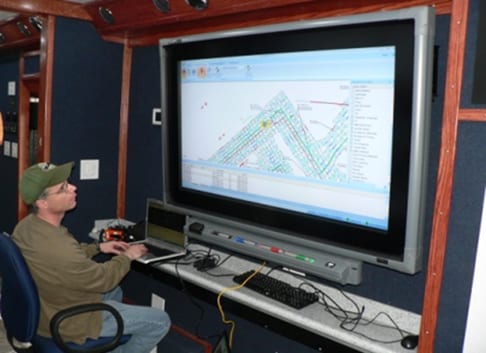Mining Project: Information Dissemination during Mine Emergencies
| Principal Investigator |
|
|---|---|
| Start Date | 10/1/2023 |
| Objective |
During an emergency incident, inefficient or failed information dissemination (ID) increases risk to endangered workers and responders and can also do psychological damage to victims’ families. Examples of information dissemination system failures have been documented and needed improvements have been identified during past mine disasters. The incident ground ID system has not suitably adapted to a changing environment and remains an identified capability gap in mining incident response. A shared concept of operations (CONOPS) with defined technologies, tactics, techniques, and procedures (T/TTPs) for an emergency ID system is needed. A means (specifically an eLearning module) to share the CONOPS with potential command center leaders and mine rescue team members is necessary if people filling those roles during future responses are to mitigate successfully the risks to endangered workers and to responders. |
| Topic Areas |
Research Summary
Approach
The Pittsburgh Mining Research Division (PMRD) Escape, Rescue, and Training (ERT) team has modelled incident response as occurring in three tiers of escalation: escape, initial response, and structured response. Each tier involves increasing numbers of participants with different roles. To increase the likelihood of success for this project, the research team will focus on a particular segment of the responder population, specifically designers, implementors, operators, and users (i.e., the target audience or decision makers at the incident) of the mine emergency response ID system used at any individual incident. Through an eLearning module, the researchers will provide an effective and efficient means to convey the widely varying system configurations that responders may encounter (as responses change on an incident-by-incident basis). Furthermore, an eLearning module will include a defined methodology to prepare response participants to deal with different levels of sophistication and provide the knowledge and skills needed to operate everything from simple systems to advanced systems such as the Mine Safety and Health Administration (MSHA) Underground Communication System (UCS).
In addition to developing the CONOPS, through the eLearning module, this project addresses the following barriers to attending ID-focused incident response training: (1) responders being unaware of the importance of ID systems (so that the cost in time and financial terms seems unwarranted compared to the return on investment); and (2) lack of convenient, mining-specific training resources. This research effort will culminate with an easily accessible mechanism for responders to acquire an understanding of ID T/TTPs and their value as well as operational proficiency with the MSHA UCS. Through these means, the responders will acquire the capacity to make better, faster decisions during high-stress incident environments.
Milestones and Accomplishments
| Description | Audience | Year |
|---|---|---|
| Form U.S. mining-based focus group and subject matter experts for review of preliminary ID CONOPS | Mine emergency response subject matter experts | 2024 |
| Update ID CONOPS based on international mining and other high-risk applications’ input/final release | Mine rescue community and eLearning development team | 2025 |
| Develop three iterations of the eLearning module | Mine emergency response and training communities | 2027 |
Planned Impacts and Outcomes
The project’s planned outcomes are threefold:
- Improved incident readiness within the mine emergency response community through enhanced awareness of information collection, distribution, and presentation methods as well as the roles that implement and use them.
- An increased number of individuals trained in the benefits of having a Common Operating Picture (COP). These individuals will have the ability to make pre-incident preparations, instill these concepts into training exercises, recognize and take advantage of the opportunities to incorporate the emergency ID technologies into existing infrastructure and routine T/TTPs into the operation incident response environment.
- More potential responders better trained in the operation, manipulation, and utilization of situational awareness tools during formal responses. The effect of being better trained means users will have the capability to make faster, more appropriate decisions while using these tools.
Outputs
The primary output of this project will be a training solution eLearning module. When this training solution module becomes available, the project team will not only make it available to the general mine emergency response community but will look to work with training facilities to incorporate the solution into their Emergency Response Training curricula. The project team will also share findings regarding the training solution’s effectiveness via published documents and live presentations.
Supporting Visuals

Example of a Command Center staff member using a situational awareness tool.
- A Global Inventory of Mine Rescue Training Facilities: Compendium of Ideas to Improve U.S. Coal Mine Rescue Training
- Mine Rescue and Response
- Mine Rescue Training Facility Inventory - Compendium of Ideas to Improve US Coal Mine Rescue Training
- Mine Rescue Training Simulations and Technology
- New Vest Style Escape SCSR Through SCSR Efficiency Improvement Study
- Refuge Alternatives in Underground Coal Mines
- Refuge Chamber Deployment and Occupancy Status During Mine Emergency Situations
- Rescue Technologies and Training
- Sprinkler Head Emergency Communications
- System Reliability and Environmental Survivability